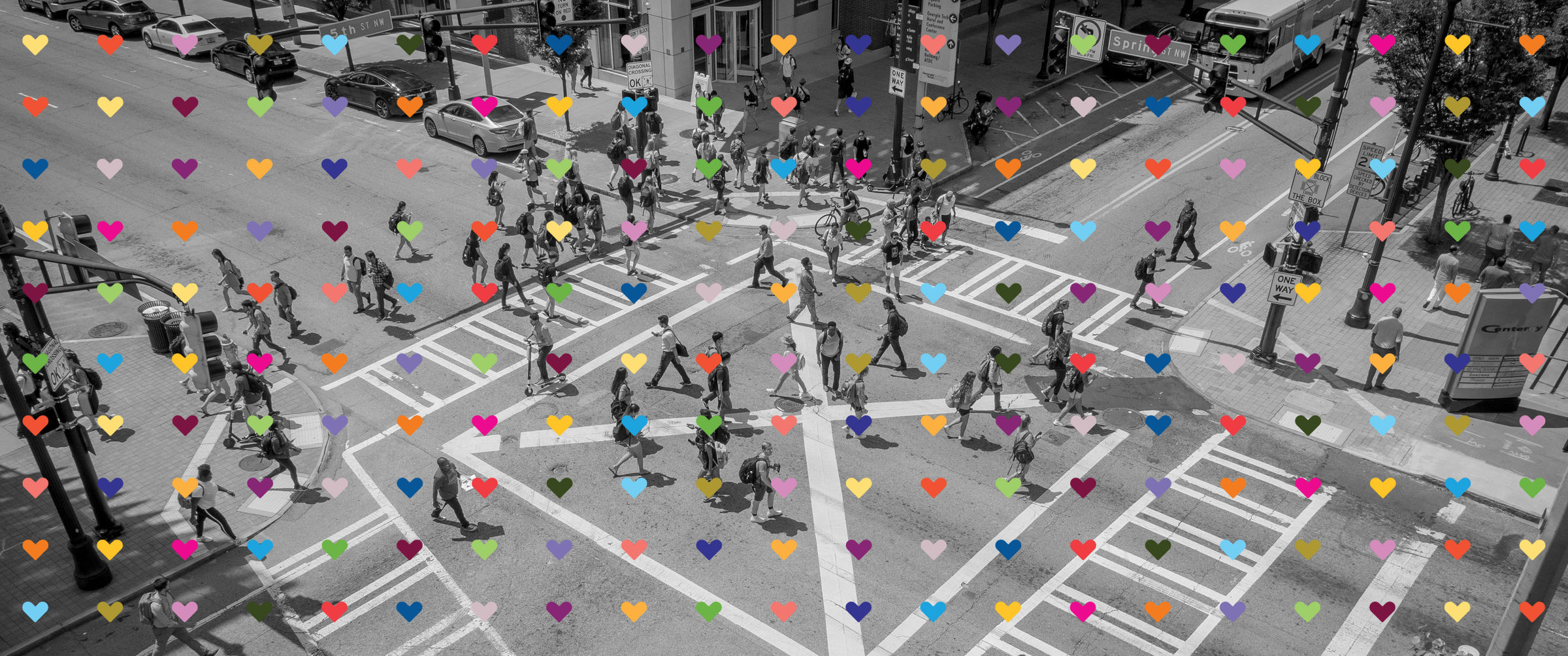Updated 5/1/2023
Juniper Street Complete Street Project
Frequently Asked Questions
Return to the Juniper Street Project Overview
What is the background and context for this project?
Projects like this are critically important for dense urban districts like Midtown and are happening around the world. As Midtown continues to grow, we need to make space for safe and convenient ways to get around by means other than driving. The Midtown community has consistently and emphatically supported these kinds of projects in Midtown. In the 2022 Midtown Community Survey, 98% of respondents called for prioritizing investments in pedestrian infrastructure and 83% in cycling infrastructure. This has been consistent across nearly a decade’s worth of surveys.
How is the project funded?
Juniper Complete Street is a City of Atlanta‐sponsored project, with Midtown Alliance serving as the Implementation Manager. Many agency funding partners are contributing to this project because it aligns with their stated long-term goals for transportation in our region.
- The project was awarded $3.3M by the Atlanta Regional Commission through their Livable Centers Initiative (LCI) Implementation Program to be administered by the Federal Transit Administration.
- Later, a $1.3M state State Road and Tollway Authority/Georgia Transportation Infrastructure Bank grant was awarded
- The City of Atlanta committed $1.3M in developer impact fees
- The Midtown Improvement District is providing additional funding
Why has the project taken so long to “get out of the ground”?
The Juniper Complete Street Project has proven to be a highly complex undertaking, involving federal and state agencies and approximately 7 different City project managers that oversaw the project at different times. The project was 90% designed in 2016. The design team has worked diligently for years to ensure that funding is in place and that all stakeholders have had the opportunity to weigh in on the design. View a summary of public engagement for this project here.
Final environmental approvals were received from Federal and State agencies in 2018 and 2019. Among many challenges are the the presence of historic streetcar tracks below the street. Our staff ultimately reached agreement with the Georgia Historic Preservation Division which requires removal and preservation of these tracks, adding to costs and time. The City issued final approvals for engineering plans in 2020. Legislation was passed by Atlanta City Council allowing Midtown Alliance to handle project procurement, and this proceeded in Fall 2022. We are now anticipating a mid‐2023 construction start date, followed by approximately 20 months of construction.
Was converting Juniper Street from one‐way to two‐way traffic ever considered?
Yes. We looked at this very closely. A detailed traffic analysis was performed which showed that a two‐way conversion would require two vehicular lanes in either direction (four lanes total) to flow properly. Given Juniper’s current three/four‐lane configuration (which varies by block), two‐way conversion would remove on‐street parking opportunities and preclude installation of wider sidewalks and any dedicated bicycle facilities. After careful review and discussion with the City of Atlanta and other area stakeholders it was concluded that the project should move forward as a one‐way “complete street” that would include permanent onstreet parking, wider sidewalks and a high‐quality bikeway.
Plans show a one‐way protected bike lane. Was a two‐way bikeway (similar to 10th Street Cycle Track) ever considered?
Yes, the design/engineering team investigated the pros and cons of a one‐way vs. two‐way bikeway very closely. Studies showed that – due to limited right of way – a two‐way bikeway on Juniper would utilize only minimum (very narrow) standards, thereby decreasing cyclist safety and degrading riding comfort. The team opted instead for a wider one‐way protected/buffered bike lane in order to be safer, more inclusive and accommodate a broader range of age groups and abilities.
A complementary northbound one‐way bicycle route along Piedmont Avenue is also fully designed and ready to proceed.
Plans show reducing Juniper Street from four to two vehicular lanes in a few areas. Are you worried about the traffic impacts of that in the future?
The short answer is no. The typical condition will be two through‐lanes, with a dedicated turn lane (i.e. a third lane) created when approaching major cross‐streets at 10th Street and Ponce de Leon Avenue. As part of the approval process, a traffic impact study was conducted using conservative future traffic projections and showed very minimal delays at “peak hour” as a result of the new lane configuration (for example, the greatest delays were at 10th Street at a maximum of only 12 seconds). Our design team weighed these impacts against the positive benefits of providing safer and more efficient access for cyclists and pedestrians along Juniper Street.
Juniper functions with two travel lanes at peak hours due to stationary vehicles in off‐peak parking and loading areas. The new design provides permanent parking/loading areas so that through lanes can operate more efficiently.
Since the traffic study was conducted several years ago, we have continued to measure traffic along the corridor to ensure that traffic hasn’t outpaced our projections. As measured at Juniper @ 5th Street (~midpoint of the project corridor), traffic volume at that intersection during the PM peak dropped from 2019 to 2021. Since 2021, volume has started to increase but is still well below counts measured in 2019 (18,920 in 2019 to 15,465 in 2023 – down 18%).
